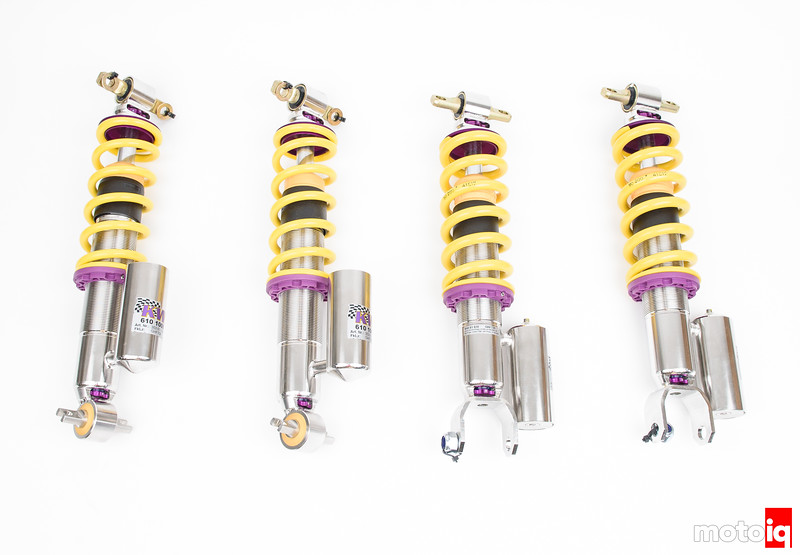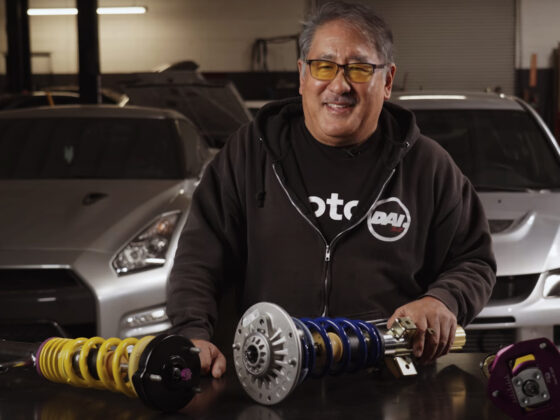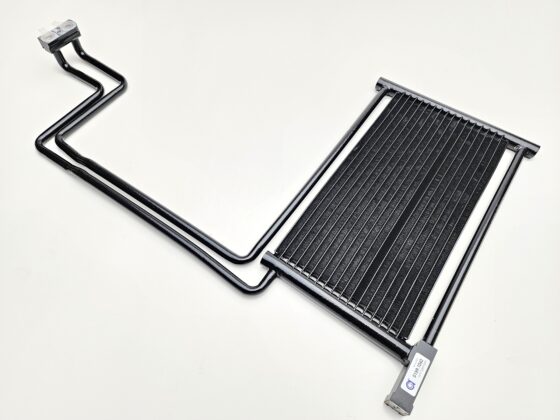
On most double adjustable shocks, if they are a twin tube, the compression adjuster is found on the bottom of the shock and adjusts the foot valve. For monotubes, double adjustable shocks are almost always remote or piggyback reservoir and the adjuster is found on the reservoir or somewhere on the passage leading to it.

Like the rebound adjuster, on most high-quality shocks the compression adjustment mostly affects the low-speed compression as shown in the above graph which shows the force effects of the compression adjustment throughout the range. To understand what low, high, and mid-speed damping does, please read the first article! As a note, higher-quality shocks usually have the adjustment affect the low-speed damping more, the adjustments on cheap shocks usually affect the entire curve. The reason is you need much more precision and a more sophisticated valve design to get a lot of control force with low fluid flows and to blow it off to absorb bumps.

So how to adjust your compression damping!
- When working with a double adjustable shock, the first rule of thumb is to make the compression damping as stiff as possible and the rebound as soft as possible. This gives the best platform control, keeps the platform (chassis) oriented best for the suspension geometry to work correctly, keeps the platform the most level for best aero performance, and reduces the amount of energy inputted into the springs for the shock to have to deal with to maintain platform control and minimize tire shock.
- However, do not make your compression damping too stiff! This is what I see as the most common mistake people make, if some is good, more is not better. You want to run the least amount of compression damping that gets the job done. This will produce the most mechanical grip by minimizing tire shock. However, I want to emphasize that you need to adjust your compression to the highest level possible without overdoing it.
- Be sure to turn your adjustment knobs the right way! Not all shocks are created equally. Some shocks turning the adjustment knob clockwise makes the rebound damping stiffer, for others softer, some shocks have handy arrows on the knobs but most don’t. Some brands of shocks turn in different directions on different models. On some brands, the compression and rebound knobs turn in opposite directions to make it stiffer and softer! If you are not 100% sure what direction to turn the knobs, call the manufacturer and verify. Many, many people, some very smart people, me included, have made the mistake of turning the knobs the wrong way. It happens all the time.
- Start at your manufacturer-recommended baseline settings for your application. Believe it or not, most brands of shocks don’t have this information but other brands like KW and Suspension Techniques do and that info is in the provided manual. Once you have confirmed your baseline settings, always start adjusting the compression side first and always experiment with going harder first before softer. The reason why you do this is because of my rule, you want the most compression and the least rebound possible. The other reason is on many shocks, the compression adjustment affects the rebound more than the rebound affects the compression adjustment.
- When you adjust your shocks, take good notes, note your starting point, and write down every single adjustment. With two adjusters on each shock, it is super easy to get confused and start turning knobs in the wrong direction. With good notes, it is easy to return to your last good setting if you start getting lost.
- If you have no manufacturer-recommended baseline starting point, start with your shocks set fully soft in both compression and rebound and first stiffen the compression one click at a time until the ride gets harsh, then back off a click. When you have found your point of maximum compression damping, now start adjusting the rebound stiffer one click at a time. Once again, when the ride gets harsh, back off one or two clicks. This is usually an excellent starting point. If you follow this method for establishing a baseline, there is no way that you can hopelessly mal adjust your shocks! Many people would be best off leaving their shocks here. Believe it or not, this setting usually works best for both street and track if all other things remain the same. Perhaps you might want to go up a click or two for the track, again starting with the compression damping but maybe not. Things like tire choices affect shock adjustment so if you change brands or types of tires, you might have to go up or down on the shock adjustment a little to get the most out of them. Fight the urge simply to go stiffer, with shocks, less is more!
- Fine-tune your shocks. Remember that shocks do not affect your suspension stiffness and overall slip angles of tires in steady-state cornering and cannot affect steady-state over and understeer. Shocks act like a weight transfer capacitor and can speed or slow weight transfer and can greatly affect how the car behaves in transitions. A shock can feel like it is a steady-state balance device but it is because it helps the car get into another phase of cornering. Adding front compression will speed turn-in and make the car more responsive to steering input, especially in the first phase of cornering, adding rebound also affects this but later from initial to mid-turn. Adding rear compression will speed the rear of the car’s response to inputs like trail braking and lift throttle making things like trailing throttle or lift throttle oversteer come on more quickly. Adding rear rebound has the opposite effect.




4 comments
Thank you for this and your previous article on adjusting shocks. Very helpful.
“But what about damping coefficient!” I’m waiting for some FSAE-traumatized person to chip in. 😉
No, good guide; a few nuances on a lot of these directions that I’d sort of thought about but not nearly as concretely as you laid it out, thank you for all this.
I hardly ever calculate that. Not even for developing a new application. It’s because 99% of the time I only have partial data to do so and I have to fill in some blanks by guessing. I think with experience it’s only minimally useful.
Honestly, makes sense. I feel like there’s far more value in being able to go “OK, the car is misbehaving in this way, what do I do to fix that?” and having a plan for what to do before the next session than in trying to refine some way to have a good guess with zero test data.
I have some spreadsheets where I took a platform I can fill in about all the numbers on (ie: Miata) and kind of back calculated some shock dyno data for setups that work through them to see if I could figure out why, and what their guys were thinking of to get there… but that’s more just an experiment rather than an attempt to have a practical thing.